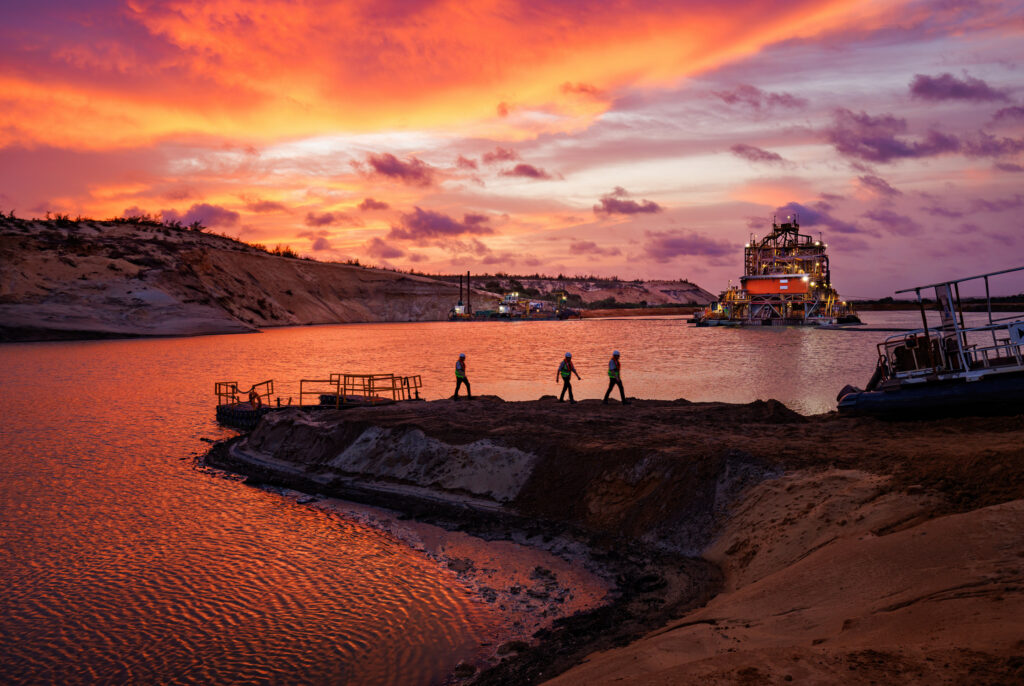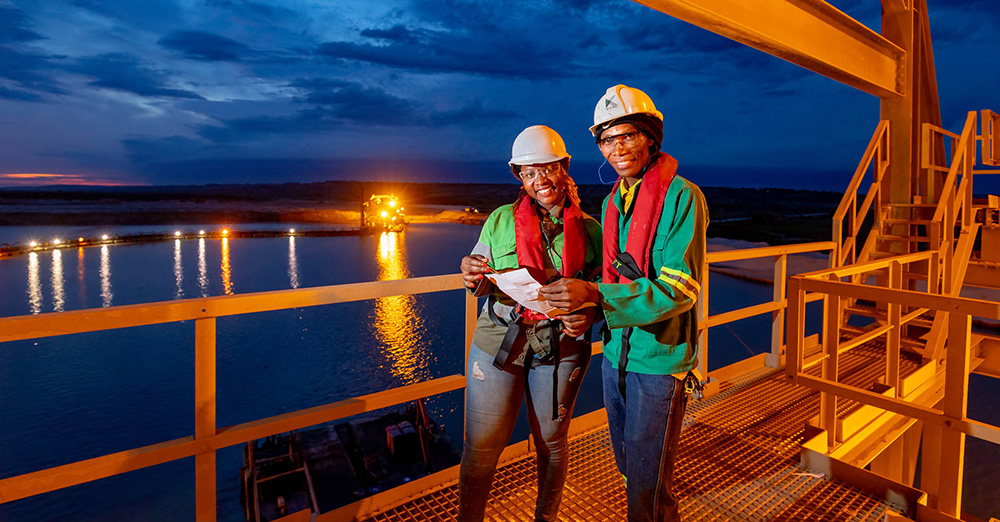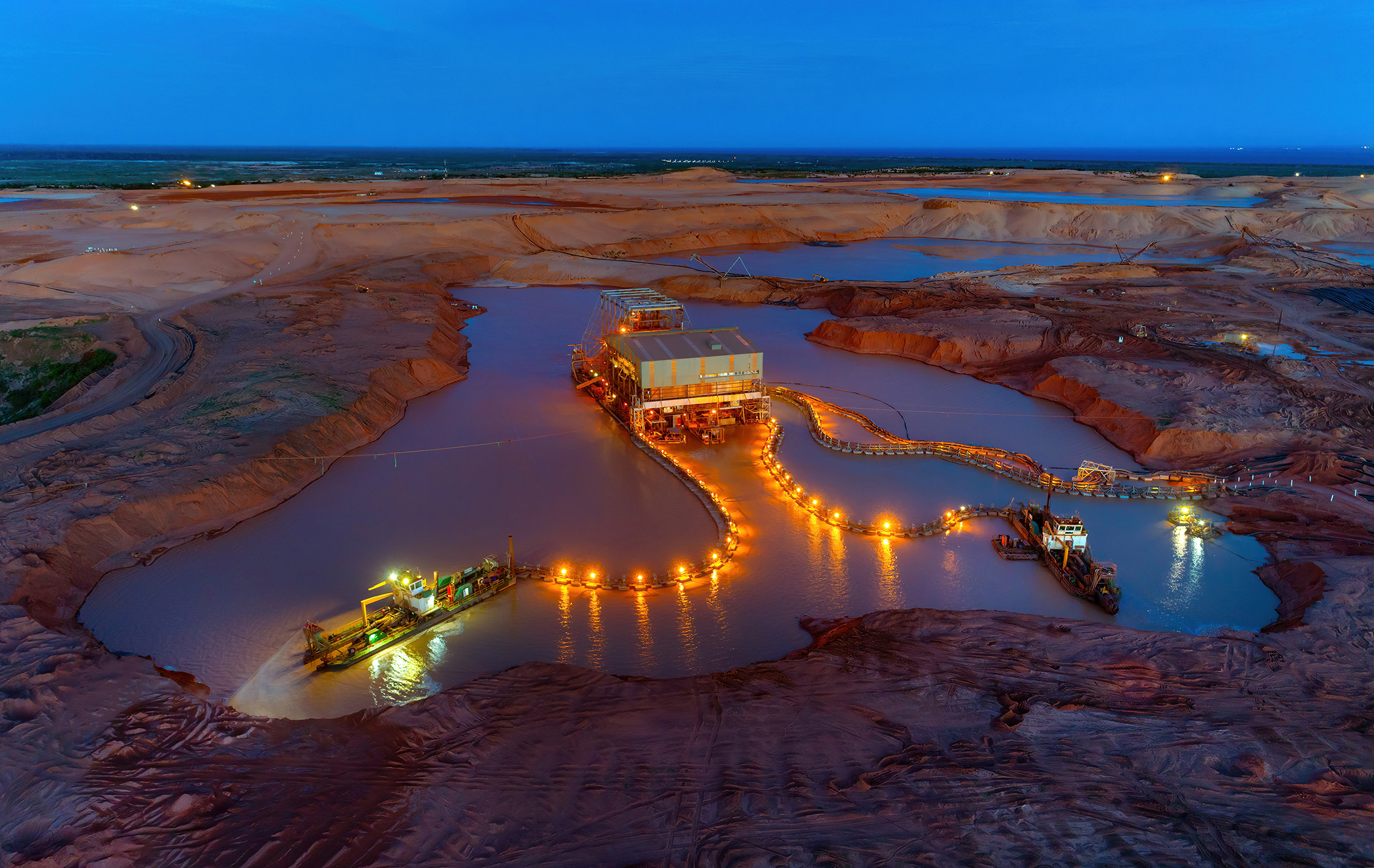The Moma Mine
Kenmare operates the Moma Titanium Minerals Mine, located on the north east coast of Mozambique.
Moma is one of the largest titanium minerals deposits in the world and has Mineral Resources to support production for more than 100 years at the current production rate.
Kenmare began production from Moma in 2007 and the Company has had a presence in Mozambique for almost 40 years.

Overview of the Moma Mine
>100 years
Moma’s life of mine at the current production rate
9 billion
Tonnes of Mineral Resources
1.12Mt
Production of finished products in 2024
7%
Mozambique’s exports attributable to Moma
| Production (tonnes) | 2020 | 2021 | 2022 | 2023 | 2024 |
|---|---|---|---|---|---|
| Ilmenite | 756,000 | 1,119,400 | 1,088,300 | 986,300 | 1,008,900 |
| Zircon | 43,300 | 56,300 | 58,400 | 51,100 | 50,500 |
| Rutile | 6,000 | 8,900 | 8,900 | 8,400 | 9,800 |
| Concentrates | 35,200 | 43,900 | 45,200 | 45,700 | 43,000 |
| Total finished products | 840,500 | 1,228,500 | 1,200,800 | 1,091,500 | 1,115,300 |
Reserves and resources

Kenmare has sufficient Mineral Resources for more than 100 years of production.
Trusted business

Find out more about Kenmare’s contribution to Mozambique.
Low-cost, bulk mining
Kenmare has three mining operations at Moma, where dredges mine titanium-rich sands in mining ponds. Currently two of the mining operations are in the Namalope ore zone and one is in the Pilivili ore zone.
Each mining operation has a Wet Concentrator Plant, which removes the valuable heavy minerals (3-5% of the ore) from the waste material to produce a Heavy Mineral Concentrate (HMC).

WCP A has been mining the Namalope ore zone since 2007 and is scheduled to continue mining there until late 2025, when it will move to Nataka, the largest ore zone within Moma’s portfolio. Within Nataka, a high grade mine path has been identified that WCP A will mine for 20 years. WCP A has a throughput capacity of 3,250 tonnes per hour (tph)
WCP B mined the Namalope ore zone from 2013 to August 2020. In September 2020, WCP B was relocated to the high grade Pilivili ore zone and it recommenced production two months later. Pilivili was chosen due to a number of favourable characteristics. WCP B has a throughput capacity of 2,400 tph, following upgrade work undertaken in 2018.
WCP C is the newest and smallest of the three Wet Concentrator Plants. It commenced production in February 2020 and it has a throughput capacity of 500 tph, representing one-fifth of the size of WCP B and one- sixth of the size of WCP A. WCP C is mining a high grade area of the Namalope ore zone, which is inaccessible to the two larger Wet Concentrator Plants.
The HMC is transported to the Mineral Separation Plant, where it is separated into four final products: ilmenite, zircon, rutile and Mineral Sands Concentrate. These products are loaded onto ocean-going vessels at Moma’s dedicated port facility to be delivered to Kenmare’s customers around the world.
Low environmental impact
Kenmare is proud of Moma’s commitment to sustainability, including its low environmental impact.
Kenmare progressively rehabilitates the land as it is mined, with the objective of returning it to local communities in a timely manner and in a more fertile state than before mining took place. Moma also benefits from access to low-cost, renewable electricity (from the Cahora Bassa Hydroelectric Complex), which supplies over 90% of the Mine’s electricity requirements.
>90%
Electricity from a renewable source (hydropower)
0
Toxic chemicals used in mining or processing operations
207ha
Land rehabilitated in 2024
186k
Trees planted in 2024
